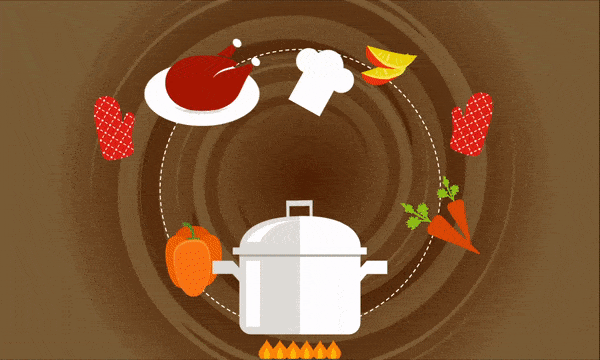Joe’s Thanksgiving turkey is popular around these parts. It converts even non-turkey eaters. They say, “I hate turkey, but I love this!”
The most interesting part? The ingredients that go into Joe’s turkey aren’t anything you would expect. Mandarins, cilantro and butter—are just a few. It sounds strange for poultry. But let us tell you—it’s otherworldly.
Wherever this skill came from, we think it’s also the same force that allows Joe to create storyboards that help directors, producers and agencies make an impact.
At Saint James Studios, here are the main ingredients that we use in storytelling—with a deft hand in just the right amounts, to cook up a buzz-worthy result.
Ingredient One: Basic humanity.
Being human gives us all some ingrained storytelling ability. It’s in a conversation with a friend: “I was walking down the street, and then (introduce disruptive element) I saw my ex!” This is storytelling at its most basic. The great storytellers among us have honed this innate ability (think comedians, preachers or your hysterical uncle), and it can be incredibly captivating.
This is prevalent in funny commercials. In comedy, you want to tell the story simply and effectively. You want to play on the actor’s faces, with an eye-level shot. This type of commercial needs to breathe, and needs to allow that basic human storytelling—and powerful comedic delivery—to shine. It relies heavily on a compelling script, and actors who can bring it to life.
Elements of basic humanity and comedy exist in many commercials in our portfolio, like Luke Wilson for Colgate.
Ingredient Two: Convergence.
You have many different elements in a story. From the script and the goals, to the director’s vision and the agency’s desires. This ingredient is about getting everything—all the perspectives, moving pieces and characters—to make sense and work together. To move in the same moral and ethical direction. It answers: How can everyone’s goals be represented in a story that makes visual sense?
This will be even more complicated in action commercials. In action-oriented commercials with many moving parts, you want to make the character’s journey relevant and interesting. You want to tell the story in the smoothest way, enhancing the visuals along the way.
We recently created storyboards for this Oreo Cookie commercial which is also a feel-good political metaphor.
Ingredient 3: Nuance.
This shows up when great filmmakers are telling a story and aren’t doing any of the obvious things. Where what they’re showing you is just as important as what they’re not showing you. Where you find these pure, elegant, poignant a-ha moments that make you feel something—and make those moments organic to the story. Where there’s scripting or imagery or genius cinematography or epic iconography that provide something extra-special.
The great commercials play on this field. Think Ridley Scott’s first Apple Macintosh Commercial from 1984. (Unfortunately we didn’t get to work on this; we were busy learning how to use the potty.)
Not every commercial needs a $1.6 million (in 1984) production budget to achieve nuance. It can exist in sprinkles, too. At SJS, we aim for nuance in our storyboards whenever we help clients find clever ways to condense information or get a message across. It’s all about finding the right visuals to tell your story most effectively!
If you want a storyboard artist for hire who’s an expert at wielding these ingredients…or if you want to make a turkey…call on us.


 Producers…Hire the right storyboard artist (or regret it later).
Producers…Hire the right storyboard artist (or regret it later). Directors…Which Style Storyboard Do You Prefer?
Directors…Which Style Storyboard Do You Prefer?